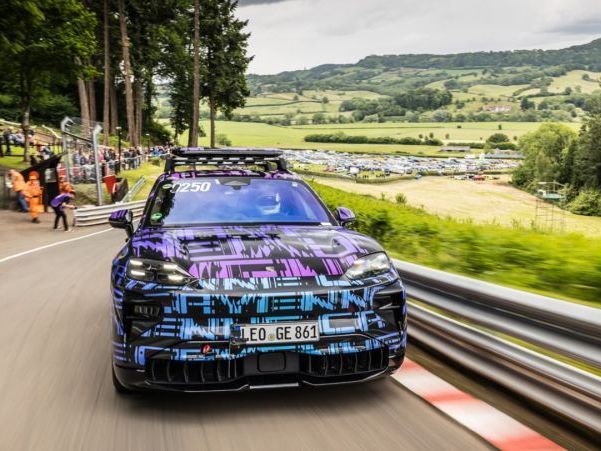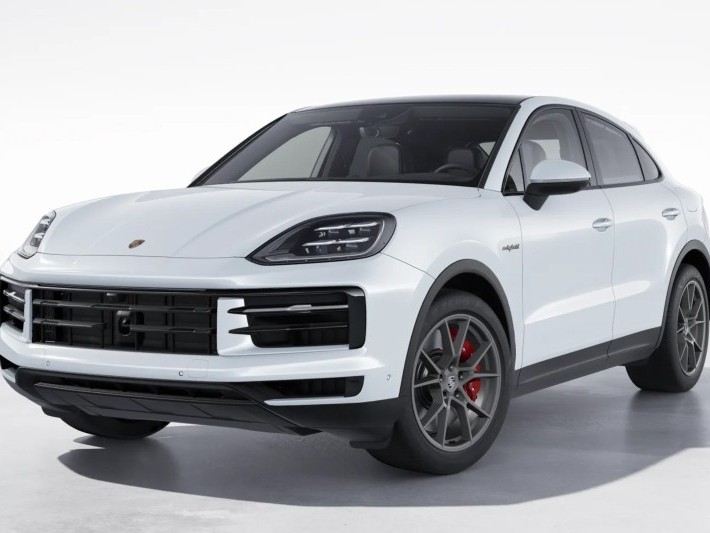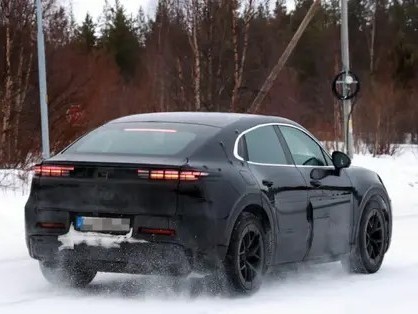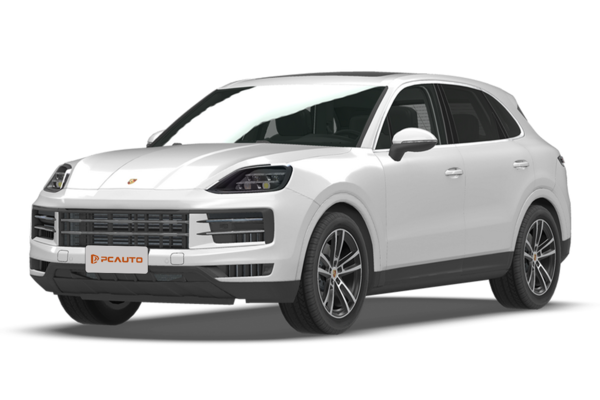Q
Is the Porsche Cayenne changing in 2025?
Porsche hasn't officially spilled the beans yet on whether the Cayenne will get a facelift or a full model change for 2025. But looking at the model's typical update cycle – usually a major refresh or all-new generation every 4 to 5 years – 2025 could very well be the year we see either a mid-cycle update or the next-gen Cayenne hit the scene.
Building on the tech we saw in the current third-gen Cayenne (launched in 2023), expect the new model to likely dial up the plug-in hybrid game. Think improvements in all-electric range or maybe even a higher-performance E-Hybrid variant joining the lineup. Inside, we're probably looking at an updated infotainment setup, maybe a PCM 7.0 system that plays nicer with more local apps.
For our friends in Malaysia, keep this in mind: if the new Cayenne does land, changes in import duties could shake up the pricing a bit. But Porsche Malaysia usually doesn't take too long to bring in the latest models once they're announced globally. And let's not forget, the Cayenne is one of Porsche's top-selling SUVs in Southeast Asia for a reason. Any update will likely keep practical stuff like off-road driving modes and adaptive air suspension – perfect for Malaysia's mixed bag of road conditions.
Your best bet? Keep an eye out for Porsche's global announcements in the second half of 2024, or swing by your nearest authorized Malaysian dealer to get the real scoop.
Special Disclaimer: This content is published by users and does not represent the views or position of PCauto.
Related Q&A
Q
Is a Porsche Cayenne good for long drive?
The Porsche Cayenne stands out as a luxury SUV that truly excels on long drives, making it a perfect fit for Malaysia's roads and climate. Under the hood, its efficient turbocharged engine paired with the 8-speed Tiptronic S transmission delivers smooth power delivery and decent fuel economy, keeping things quiet and comfortable even when cruising at highway speeds. The standard air suspension system automatically adjusts damping based on road conditions, taking long-distance comfort up another notch.
What really helps on those extended journeys is the Cayenne's ergonomic seat design, which minimizes fatigue during hours behind the wheel. Throw in advanced driver assists like adaptive cruise control and lane-keeping, and it's clear this SUV is built to reduce the strain of long drives. For Malaysian drivers, the Cayenne's air-con system is a beast—blasting cold air fast enough to tackle our tropical heat with ease. The generous fuel tank also means fewer stops at the pump, which is a big plus on those highway stretches.
Space-wise, the Cayenne doesn't disappoint either. Rear legroom and boot capacity are class-leading, easily swallowing all the luggage for a family trip. If you're watching fuel costs, the hybrid variant ups the efficiency game even more. Sure, luxury car maintenance isn't cheap, but Porsche's service network in Malaysia is solid, giving owners peace of mind. All things considered, if you're someone who regularly hits the North-South Expressway, the Cayenne is definitely worth a spot on your shortlist.
Q
When did Porsche stop making Cayenne?
The Porsche Cayenne, the brand's luxury SUV, is still in production and going strong. The current iteration is the third generation (codenamed PO536), which received a mid - cycle refresh in 2023. This update brought with it a revised plug - in hybrid system and a brand - new interior design. In the Malaysian market, the Cayenne has long been a top pick among high - performance SUVs. Local buyers can choose from a variety of powertrains, including the 3.0T V6, 2.9T twin - turbo V6, and the range - topping 4.0T V8. For those who desire a sportier look, the Coupe variant is also available. Porsche is steadily ramping up its electrification efforts in Southeast Asia, and Malaysian customers should keep an eye on the Cayenne E - Hybrid. With an electric - only range of 80 kilometers (WLTP), it's well suited for daily city driving. Thanks to the Malaysian government's ongoing tax incentives for hybrid vehicles, these electrified versions are highly cost - effective. For the latest specs and pricing, it's always best to check directly with official Porsche channels.
Q
What engine is in the Cayenne 2025?
The 2025 Porsche Cayenne hits the Malaysian market with a solid lineup of powertrains to suit different tastes. There's the efficient 3.0-liter V6 turbo kicking out 353 horsepower, a beefier 2.9-liter V6 twin-turbo in the Cayenne S good for 474 horses, and at the top of the heap, the 4.0-liter V8 twin-turbo in the Cayenne Turbo GT that cranks out a whopping 631 hp. Then there are the plug-in hybrid options, like the Cayenne E-Hybrid, which pair either a 2.0-liter or 3.0-liter engine with an electric motor for a greener drive. These PHEVs offer around 40-60 km of all-electric range, making them pretty ideal for Malaysian city commutes. All these engines are mated to an 8-speed Tiptronic S transmission, ensuring smooth shifts and decent fuel economy. What's cool about Porsche's engine tech here is how it balances performance and efficiency. The V8, for example, uses cylinder deactivation, automatically switching to four-cylinder mode under light loads to save fuel. And the hybrids, of course, let you cruise on pure electric to cut down on emissions. For Malaysian buyers, it really comes down to daily needs. If you're often hitting the highway or crave that sporty feel, the V6 or V8 versions are the way to go. But if you're big on eco-friendliness and fuel efficiency, the hybrid models should be right up your alley.
Q
What is the battery in the Porsche Cayenne 2025?
The 2025 Porsche Cayenne is expected to come equipped with advanced lithium-ion battery packs, though exact specs will likely vary depending on the trim—think base, plug-in hybrid, or high-performance models. Your standard gas-powered Cayenne will stick with the tried-and-true 12V AGM battery, but the plug-in hybrid variants are where things get interesting, packing higher-voltage lithium-ion units to power that electric motor.
Now, a heads-up for Malaysian drivers: our tropical heat can be tough on batteries. The high temps tend to speed up electrolyte evaporation, so make it a habit to check your battery's condition regularly. And when it comes time for replacements, stick with Porsche OEM parts—trust me, compatibility is key here.
Porsche's smart energy management system is a solid plus too; it optimizes charging and discharging to help squeeze more life out of that battery. If you're eyeing the hybrid, expect a bump in all-electric range compared to the previous gen, but remember, real-world numbers will hinge on local road conditions and how you drive—stop-and-go city traffic versus highway cruising makes a big difference.
For battery care, avoid leaving the car parked for super long stretches until it's drained; that's a quick way to kill a battery. And don't sleep on those preventive checks at your Porsche service center—their diagnostic tools can catch issues before they turn into headaches. Keep these tips in mind, and your Cayenne's battery should stay in the game for the long haul.
Q
Will there be a 2025 Porsche Cayman?
From what we're hearing, Porsche is indeed gearing up to launch an all-new Cayman in 2025 as part of its broader electrification strategy. Word on the street is this new model will likely ditch the combustion engine in favor of a pure electric powertrain, staying true to the 718 lineage's sports car DNA while cranking up the performance and tech to meet global demand for high-performance electric sports cars.
For Malaysian enthusiasts, there's a good chance this EV Cayman will make its way here through official channels. However, we'll have to wait for Porsche Asia Pacific to confirm exact launch timings and local specifications.
What's really exciting is that Porsche isn't starting from scratch with EVs. They've already racked up plenty of experience with the Taycan and the upcoming electric Macan, so expectations are high for this electric Cayman – especially when it comes to range figures and fast-charging capabilities, which could be pretty impressive.
Malaysian buyers should keep an eye on updates from their local Porsche centers. It's also worth watching how government EV policies shape up – things like import tax breaks or improvements to charging infrastructure could have a real impact on both the car's final price tag and how practical it is to live with.
Q
What's the fastest 2025 Porsche?
The fastest Porsche model of 2025 is the all-new Taycan Turbo S. This pure electric sports car, armed with its potent dual-motor all-wheel-drive setup, cranks out a whopping 1,000 horsepower in overboost mode. It rockets from 0-100 km/h in a mere 2.3 seconds and tops out at 320 km/h, making it Porsche's quickest production car to date.
Under the skin, the Taycan Turbo S packs an advanced 800V high-voltage battery system. It's not just about brute force, though – this thing supports 270 kW fast charging, meaning you can get around 400 km of range in just 15 minutes. Perfect for those long hauls up and down Malaysia's North-South Expressway.
What's really impressive is how Porsche's EV tech innovation lets it deliver mind-blowing performance without sacrificing everyday usability. Take the adaptive air suspension, for example – it automatically adjusts to the road conditions, ensuring a comfortable ride no matter what Malaysian roads throw at it.
For speed-craving Malaysian Porsche fans, the Taycan Turbo S isn't just a statement of Porsche's performance prowess in the electric age; it's a glimpse into the future of supercars. And to sweeten the deal, Porsche Centre Malaysia offers exclusive charging networks and after-sales service, so owners can hit the road with total peace of mind.
Q
What's the cost of a 2025 Porsche?
Porsche hasn't officially announced their 2025 model prices for Malaysia just yet, but we can get a ballpark figure by looking at the 2024 lineup. For example, the entry-level Macan is expected to start around RM400,000, while the 911 Carrera will likely push north of RM900,000. Of course, the final number will dance around a bit depending on the specific trim, the options you tick, and even currency exchange rates.
Let's not forget, in Malaysia, imported car prices typically bundle in duties, sales tax, and registration fees – these can add a pretty penny to the sticker price. If you're seriously considering one, your best bet is to keep an eye on Porsche Malaysia's official website or hook up with an authorized dealer to get the most accurate quote.
Porsche's reputation is built on that legendary driving feel and top-notch interiors. Whether you're looking at the SUVs like the Cayenne and Macan, the iconic 911 sports cars, or even the all-electric Taycan, they all blend cutting-edge tech with that timeless Porsche design language. Malaysia's tropical weather and mixed road conditions can be tough on cars, but Porsche's all-wheel-drive systems and adaptive suspension setups handle it like a champ. Plus, their after-sales service network covers all the major cities, so you can have peace of mind knowing support is there when you need it.
Q
How much should I pay for a 2025 Porsche Cayenne?
Pricing for the 2025 Porsche Cayenne in Malaysia is expected to vary depending on configuration and optional extras. Looking at the current Cayenne, which starts roughly between RM600,000 and RM700,000 before any added options, the new model might see slight adjustments due to exchange rates, import duties, and equipment upgrades. Your best bet for the latest figures is to reach out directly to authorized Porsche dealers in Malaysia, like Porsche Centre Kuala Lumpur or Johor Bahru. With luxury cars, custom options—think wheels, interior materials, or driver assistance systems—can really swing the final price tag, so dealerships will have the most accurate breakdown for your build.
A big factor keeping Cayenne prices on the higher side in Malaysia is the import duty structure, which can add up to 30-50% to the car's cost when you factor in tariffs, consumption tax, and sales tax. If you're planning to hold onto your Cayenne for the long haul, it's worth checking out Porsche Malaysia's official warranty coverage—typically 5 years with unlimited mileage—and their service packages. These can be smart investments to help manage long-term maintenance costs.
Sure, rivals like the BMW X5 or Mercedes-Benz GLE might come in with slightly lower price tags in the Malaysian market, but Porsche's brand cachet and the sheer driving dynamics it delivers remain the Cayenne's stand-out strengths.
Q
What transmission is in the 2025 Porsche Cayenne?
The 2025 Porsche Cayenne offers Malaysian buyers a variety of transmission options, each tailored to specific models and powertrains. The base Cayenne and Cayenne S are expected to feature the refined 8-speed Tiptronic S automatic transmission, celebrated for its smooth shifts and quick reflexes—striking that perfect balance between daily comfort and spirited performance. Step up to the high-performance Cayenne Turbo GT, and you'll likely find the more aggressive 8-speed PDK dual-clutch gearbox under the hood, engineered specifically for handling massive torque and delivering lightning-fast shift times. For the plug-in hybrids, like the Cayenne E-Hybrid, Porsche fits an 8-speed automatic transmission specially tuned for the hybrid system, maximizing the synergy between electric and combustion power for optimal efficiency.
For Malaysian consumers, Porsche's transmission tech doesn't just prioritize driving thrills; it's also built to withstand our tropical climate. Think beefed-up cooling systems and enhanced sealing to keep things running smoothly when the mercury rises. If you're in the market, pick based on your driving style: the Tiptronic S is your go-to for relaxed, comfortable commutes, while the PDK will appeal to those craving that track-inspired edge. And regardless of which you choose, all transmissions come with Porsche's "Sport Response" mode, giving you an instant boost in power delivery—perfect for attacking Malaysia's twisty backroads or cruising confidently on the highway.
Q
What is the range of the 2025 Cayenne Hybrid?
The 2025 Cayenne Hybrid is expected to deliver an all-electric range of 60 to 80 kilometers, though actual figures may vary based on driving conditions, battery state, and vehicle specifications. This plug-in hybrid model pairs a 3.0-liter V6 turbocharged engine with an electric motor, churning out a combined system output of around 460 horsepower—making it equally adept at city commutes and longer journeys. For Malaysian buyers, its fuel efficiency translates to noticeable savings at the pump, especially handy for navigating traffic-heavy cities like Kuala Lumpur. What’s notable is that plug-in hybrids in Malaysia qualify for tax incentives, including import duty and sales tax exemptions, plus subsidies for home charging installation. If you’re mostly doing short trips, lean into electric mode to maximize savings, and keeping up with high-voltage battery maintenance will help extend its lifespan. These luxury plug-in hybrid SUVs hold up well in tropical climates, but it’s wise to keep the battery around 50% charge if you’re leaving it parked for extended periods.
Latest Q&A
Q
Does the 2020 Honda Accord have transmission problems?
The 2020 Honda Accord has performed well overall in the Malaysian market. Its CVT and 10-speed automatic transmissions (depending on the trim) are technically mature, with most owners reporting smooth and reliable operation. However, some isolated cases may experience slight low-speed hesitation or delayed shifting, which are common characteristics of CVT transmissions rather than malfunctions. Honda Malaysia has not issued any large scale recalls or technical bulletins for this model regarding the transmission. It is recommended to check the transmission fluid condition during regular maintenance to ensure optimal performance. For consumers considering a used 2020 Accord, it is advisable to conduct a pre-purchase inspection through an authorized Honda service center, focusing on reading transmission fault codes and historical data. Notably, while CVT transmissions are known for their fuel efficiency, driving style can affect their lifespan. It is recommended to avoid frequent hard acceleration to extend component longevity. If unusual shifting vibrations or warning lights appear, contact an authorized Honda service point promptly for professional diagnosis. All Honda service centers in Malaysia are equipped with dedicated diagnostic equipment to quickly identify issues.
Q
What year to avoid Accord?
In Malaysia, the Honda Accord is a popular mid-size sedan, but certain model years can have some common issues that buyers should watch out for when shopping around. Based on owner feedback and expert reviews, some 2013 and 2014 Accord models had problems with transmission jerking and electronic system glitches, especially the CVT-equipped versions, which might develop rough shifting after long-term use. Additionally, owners of 2008 to 2010 Accords have reported higher fuel consumption and suspension noises. While these don't affect driving safety, they could increase long-term maintenance costs. If you're buying a used Accord, it's better to prioritize models from 2015 onwards—they saw significant improvements in reliability and fuel efficiency. Malaysia's hot and humid climate means you should also pay extra attention to the car's air conditioning system and electrical wiring when checking it out. Regular maintenance can really help extend the vehicle's lifespan. If your budget allows, the new Accord's hybrid system performs better in terms of fuel savings and driving experience, making it a good fit for buyers who value eco-friendliness and comfort.
Q
Which is better, the 2019 or the 2020 Honda Accord?
Both the 2019 and 2020 Honda Accord are really popular mid-size sedans in the Malaysian market. They don't differ much in core specs, but the 2020 model gets some nice detail upgrades. On the outside, the 2020 Accord has subtle tweaks to the front grille and wheel designs, giving it a more modern look, plus there are new exterior color options. Inside, the 2020 version comes standard with an 8-inch infotainment screen and an upgraded Honda Sensing safety suite, including more responsive adaptive cruise control and lane-keeping assist – features that were optional on some 2019 trims. Under the hood, both models offer the 1.5T turbo engine or the 2.0L hybrid system, with similar fuel economy, but the 2020's CVT transmission feels smoother in its tuning. For Malaysian buyers, if your budget allows, the 2020's upgraded features are worth considering, especially the improved safety tech which is really handy for daily driving. It's worth noting that 2019 models might offer better value in the used car market, but make sure to check the service records carefully if you go that route. The Honda Accord is known in Malaysia for its reliability and low maintenance costs, so both model years are solid picks – it just comes down to your budget and how much you want the newer features.
Q
Which year of Accord is most reliable?
In the Malaysian market, the Honda Accord is a favorite among consumers for its reliability and durability, especially the ninth-generation models produced from 2013 to 2017, which deliver an outstanding overall performance. This generation comes with an optimized 2.4-liter naturally aspirated engine or a 3.5-liter V6, offering smooth power delivery and decent fuel efficiency. It's paired with either a CVT or 6-speed automatic transmission—both mature technologies with low failure rates. Additionally, the ninth-gen Accord features a solid body structure and a well-tuned chassis that balances comfort and handling, making it suitable for Malaysia's diverse road conditions. If your budget is tight, the eighth-generation Accord (2008–2012) is also a solid pick, though keep in mind that some high-mileage used units may have issues like worn steering gears or suspension bushings. When shopping for a used Accord, prioritize checking regular maintenance records and pay close attention to the upkeep of critical components like transmission fluid and timing chains. As for hybrid versions, the i-MMD system in the tenth-generation Accord (2018 onwards) performs reliably, but battery life will gradually decline with years of use—professional testing is recommended before purchase. Overall, the Accord ranks among the most reliable in its class, and with proper maintenance, it can stay in great shape for the long haul.
Q
How long will a 2020 Accord last?
The 2020 Honda Accord can typically clock 200,000 to 300,000 kilometers or more with regular maintenance and proper use. Its actual lifespan depends on the owner's driving habits, how often it's serviced, as well as road conditions and climate in Malaysia. Under the hood, it’s packing Honda’s reliable Earth Dreams engine paired with a CVT transmission—proven tech with solid durability. Sticking to regular oil changes, transmission fluid replacements, and maintaining key components like the brakes and suspension can seriously extend its road life. Malaysia’s hot and humid weather might take a toll on rubber parts (think belts and seals) and the battery, so it’s a good idea to check these every six months and opt for original or high-quality replacement parts. Also, the Accord holds its value pretty well in Malaysia’s used car market, and a solid service history can bump up its resale price even more. For long-term ownership, follow the official maintenance manual and head to authorized Honda service centers for upkeep—you’ll get professional technical support and genuine parts that way. If you’re planning to keep it for the long haul, consider periodic deep maintenance too, like fuel system cleaning and coolant replacement, to keep the car in top shape.
View MoreRelated News

Porsche launches wireless charging technology, while Tesla announces the cancellation of Cybertruck-related development
MichaelSep 11, 2025

Porsche Cayenne EV will offer wireless charging functionality, eliminating the need for heavy charging cables
JamesSep 5, 2025

Porsche Tests Second-Gen Cayenne Electric, Aims to Rival Model X
JohnJul 16, 2025

Porsche Cayenne: Redefining Practicality with Spaciousness and Versatility
RobertMay 12, 2025

Porsche is about to launch an electric version of Cayenne, spy shots of the Swedish test have been exposed
AshleyApr 2, 2025
View More

















Pros
Cons